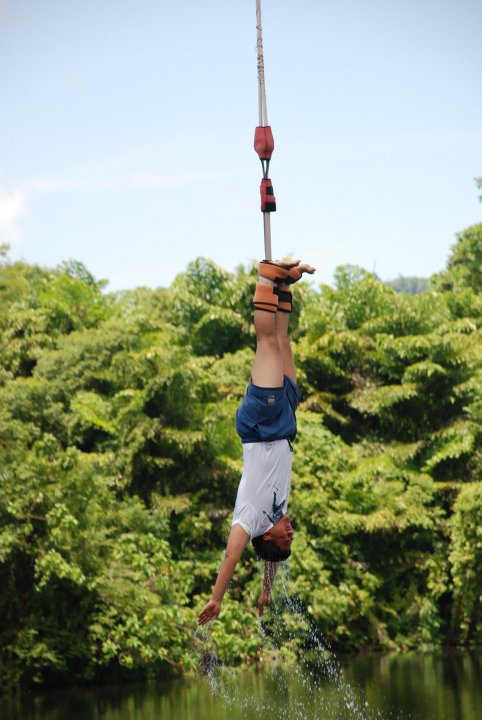
Not this kind of bungy. Image: Flickr/fauzay
When you hear the word ‘bungee’ you don’t immediately think of ocean research. But the daredevil’s rubbery, stretchy friend is now doing its bit to assist in ocean and coastal science.
In order to hold monitoring equipment in place, marine and aquaculture researchers currently use chain to attach their equipment to moorings anchored to the ocean floor.
This is effective, but it can have some undesirable side effects. Marine chain is heavy. It has to be to withstand the power of the ocean. Unfortunately, this means that the weight of the chain moorings can damage the delicate sea floor, gouging bits out as it drags along.
Chain also takes up a lot of space. Because there needs to be some give (to prevent it from snapping), the chain needs to be much longer than the depth of the water. This is also a factor for aquaculture – the more ocean floor real estate occupied by chain, the less room they have for their production.
So what if there were a mooring that dispensed with the need for all that chain? A little lateral thinking, and … meet our home-grown bungee mooring, developed in partnership with Hobart-based company Specialised Industrial Products.
Just the same way as a standard bungee cord stretches and stretches and S-T-R-E-T-C-H-E-S, so does the rubber cord attached to the mooring hardware – up to five times its length at rest. This allows it to move with the dynamics of the water, instead of resisting it. As a result, the mooring can be smaller, lighter and take up less space on the ocean floor.
A bungee that goes UP.
Not only that – the slimline design means it’s less vulnerable to fouling, which is the encrusting of small marine animals, plants and algae on the surface. That reduces the drag and load even further. Stretching instead of straining also lessens the stress on the coupling points, saving investment costs, maintenance cost and downtime. Our new bungee cords are estimated to have twice the working life of a traditional chain mooring, at about the same initial cost – around $1000 each.
This is just one of a, er, raft (see what we did there?) of marine innovations we have made in collaboration with industry. For more information contact Tim Lynch on tim.lynch@csiro.au or (03) 6232 5239.


